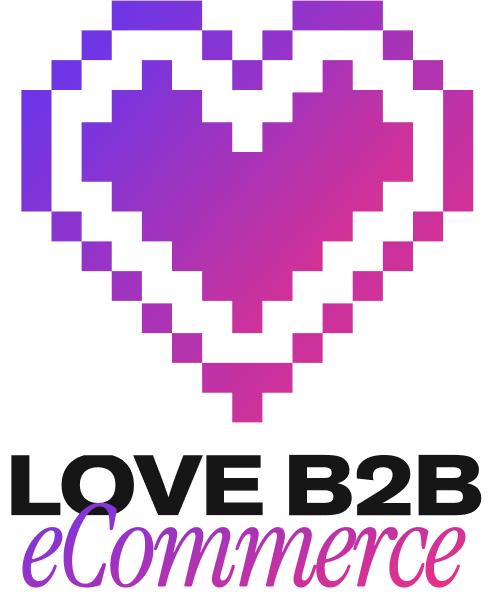If you’re considering getting into wholesale, you probably have a lot of questions! Even those with existing D2C (direct-to-consumer) retail experience will need some guidance when it comes to launching a wholesale business - and that’s where we come in!
At SparkLayer, we support merchants of all sizes and stages to power their B2B and get them growing. In this guide, we’ll answer some of the most common questions we hear from brands, including:
- How to wholesale products to retailers - from scratch!
- The steps to building long-term, successful B2B relationships
- Whether wholesale is the right next move for your business
What does it mean to sell wholesale products?
Selling wholesale basically means you’re supplying products in bulk to other businesses (usually retailers), who then resell those items to end customers (also known as end consumers).
- Wholesale differs from B2C (business-to-consumer) because it usually involves:
- Larger order quantities for B2B buyers
- Discounted or negotiated pricing
- Repeat, regular purchasing cycles
- Ongoing business relationships
Need to get to grips with the basics of B2B and some eCommerce acronyms? Head to our intro guide and then come back to read up on how to sell wholesale products!
How to sell wholesale products: getting started
If you’re wondering how to sell wholesale products to retailers, the process might feel a bit overwhelming at first. But, with the right foundations in place, it’s much more straightforward than many people expect.
Here’s how to get started, based on real-world conversations we have with prospective B2B brands all the time:
1. Define your wholesale pricing strategy
B2B involves selling at a reduced cost compared to retail or D2C pricing, while still leaving room for your business to profit. A lot of brands start out by setting their wholesale prices at 50% of the retail price. This will depend on your product, the industry you’re in, desired profit margins, and what your competitors are doing.
2. Package your products for wholesale In modern wholesale, B2B buyers expect clear product information, professional packaging, and, crucial for those repeat orders, consistency. Ensure your items are correctly labelled and ready to display or stock in retail shelves or online stores without extra effort for your buyers. A little thought goes a long way!
3. Create a wholesale catalogue A digital catalogue is essential, especially when you’re starting out and building a B2B brand from scratch. This catalogue or list should list your products, wholesale-specific prices, any minimum order quantities (MOQs), and available variations (sizes, colours, etc.). It makes your business look professional and builds retailer confidence, all while streamlining the process and making supplier selection easier!
4. Choose your selling process
In 2025, most wholesale happens digitally rather than by phone or email, which are more traditional methods. Setting up a B2B eCommerce platform means retailers can: - Browse wholesale products and prices online - Self-service and order 24/7, globally - Have control and overview of order details
This creates a seamless, self-service experience and frees up your time to focus on growth and value-add tasks.
5. Approach the right retailers
When learning how to sell wholesale items, targeting the right buyers matters. Start by approaching retailers or stores that align with your brand values and customer base. Independent shops, online marketplaces, and niche retailers are often more approachable than large chains in the early stages, so it’s worth starting small and focusing on developing strong, long-term relationships!
How to sell wholesale products to retailers
Once you’ve secured your first wholesale accounts, the key is building lasting partnerships. Successful wholesale selling isn’t about a one-off transaction in that way that D2C often is.
Buying behaviour is different, even though some expectations are merging - that means B2B buyers aren’t easily swayed by flash sales, impulse purchasing, or trendy branding on social media. Wholesalers become successful by focusing on becoming reliable suppliers that retailers want to work with again and again.
Here’s how to make that happen:
- Consistency - deliver products on time, every time. Reliability builds trust.
- Flexibility - offer negotiated pricing or custom bundles to fit retailer needs; establish customer groups and assign bespoke price lists to them (e.g. new buyers, VIP customers, special terms).
- Communication - keep in touch with your buyers, share product or platform updates, and provide ongoing training and support. Thank buyers for big orders, nudge them to order regularly, and keep them in the loop!
- Value-add - give retailers marketing assets, product training, or display ideas that help them sell more effectively. Keeping them happy is a great way to keep them coming back to you, long-term.
Is wholesale right for your business?
Selling wholesale products isn’t the right move for everyone, but it can be a powerful growth strategy if:
- You already have proven products with steady demand
- Your margins can sustain wholesale pricing
- You’re ready to handle larger bulk orders
- You’re interested in building B2B relationships, not just one-time sales
If these sound like your situation, learning how to wholesale products could be the best next step for your brand. Head to our How to wholesale guide for a full run-down of top-tier, proven tactics to successfully become a wholesaler.
Final thoughts
So, how do you sell wholesale items in 2025? By combining a strong pricing strategy, slick presentation, and the right eCommerce platform to streamline the process.
Selling wholesale products to retailers opens the door to steady, predictable income, larger, higher-value orders, and long-term business growth!
At SparkLayer, we help brands of all sizes set up and scale their B2B eCommerce operations, making it simple to start selling wholesale online. If you’re ready to explore wholesale, our team can guide you through the next steps, from building your catalogue to creating a seamless self-service ordering experience.

















